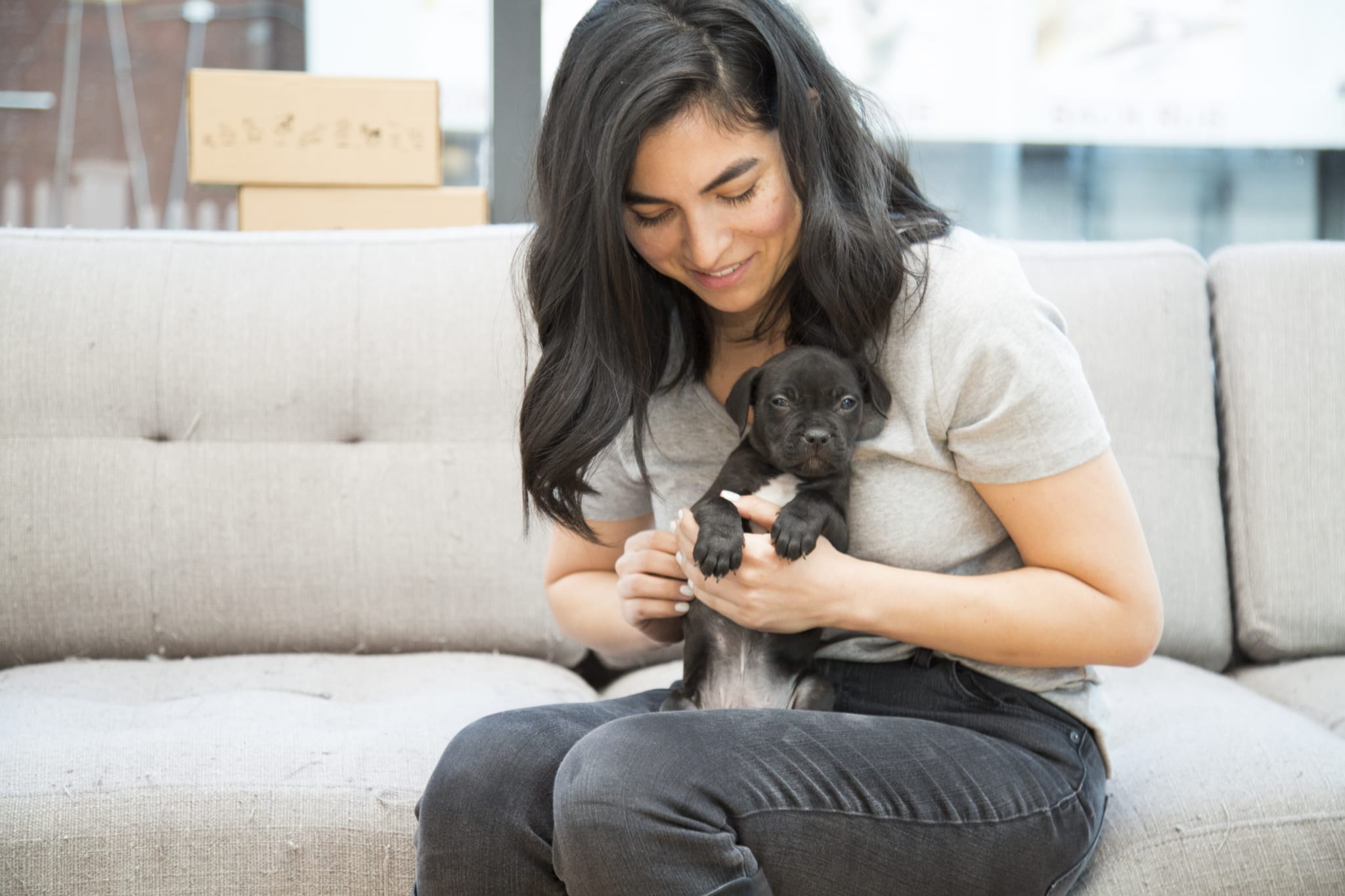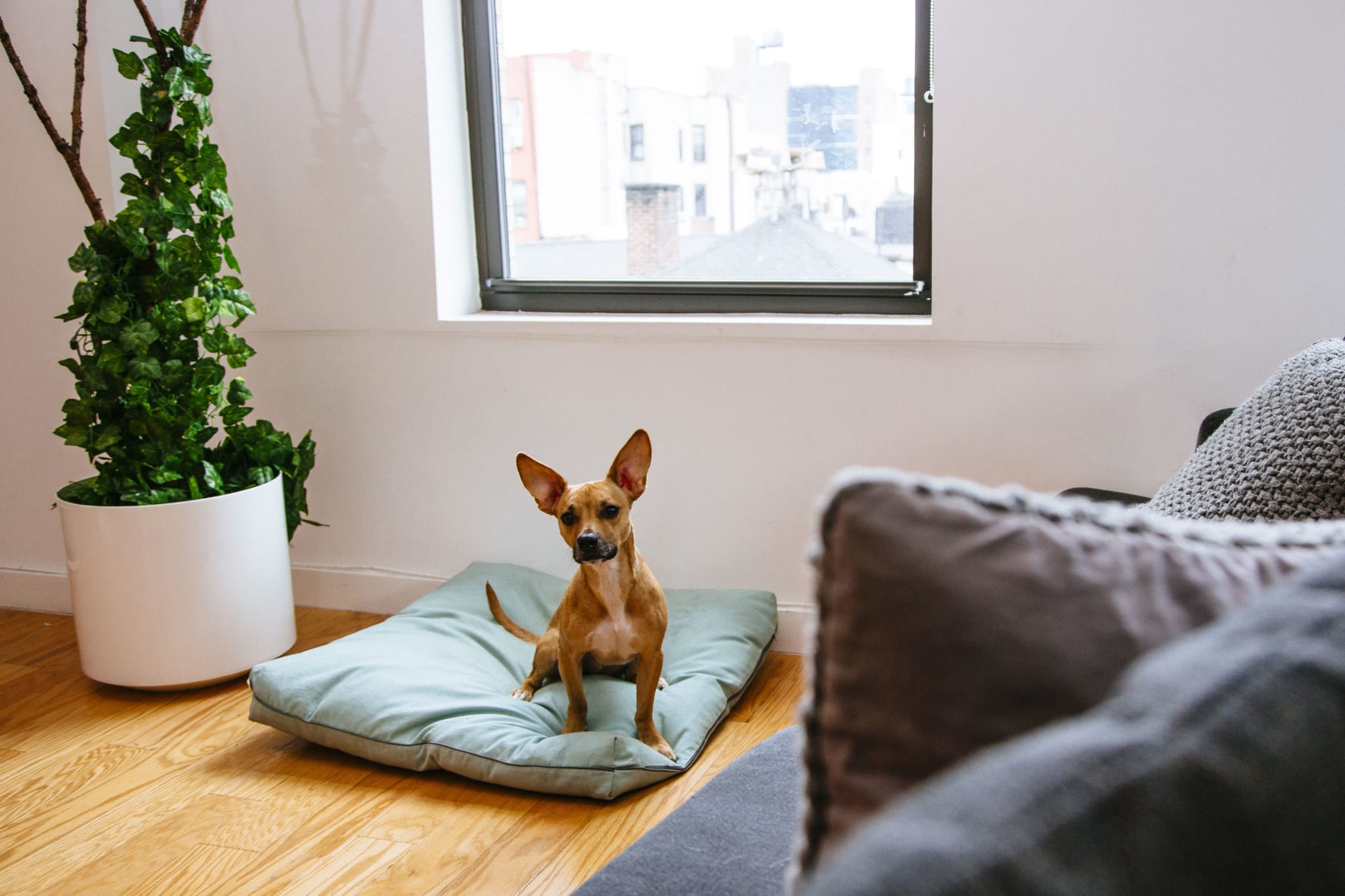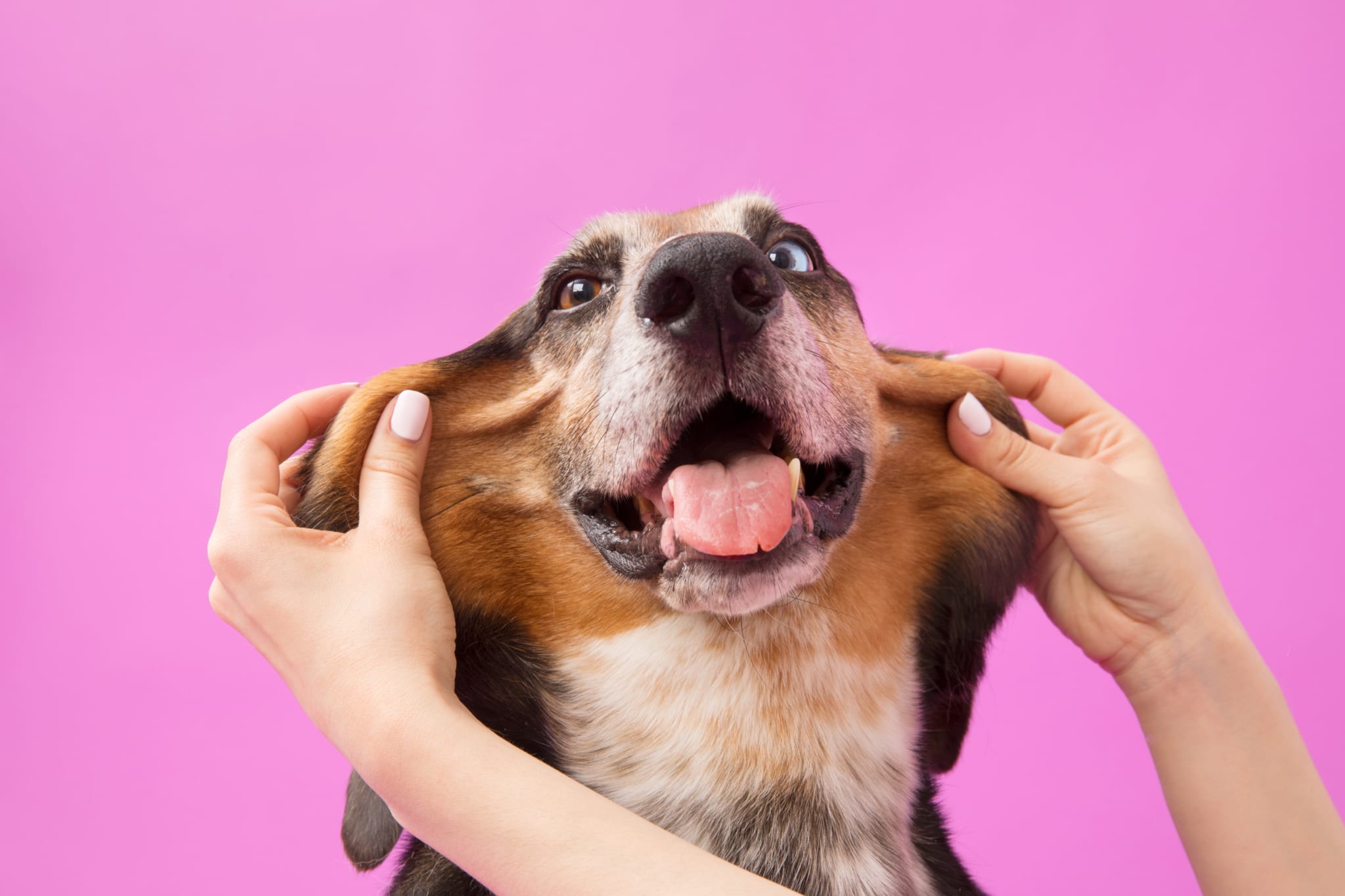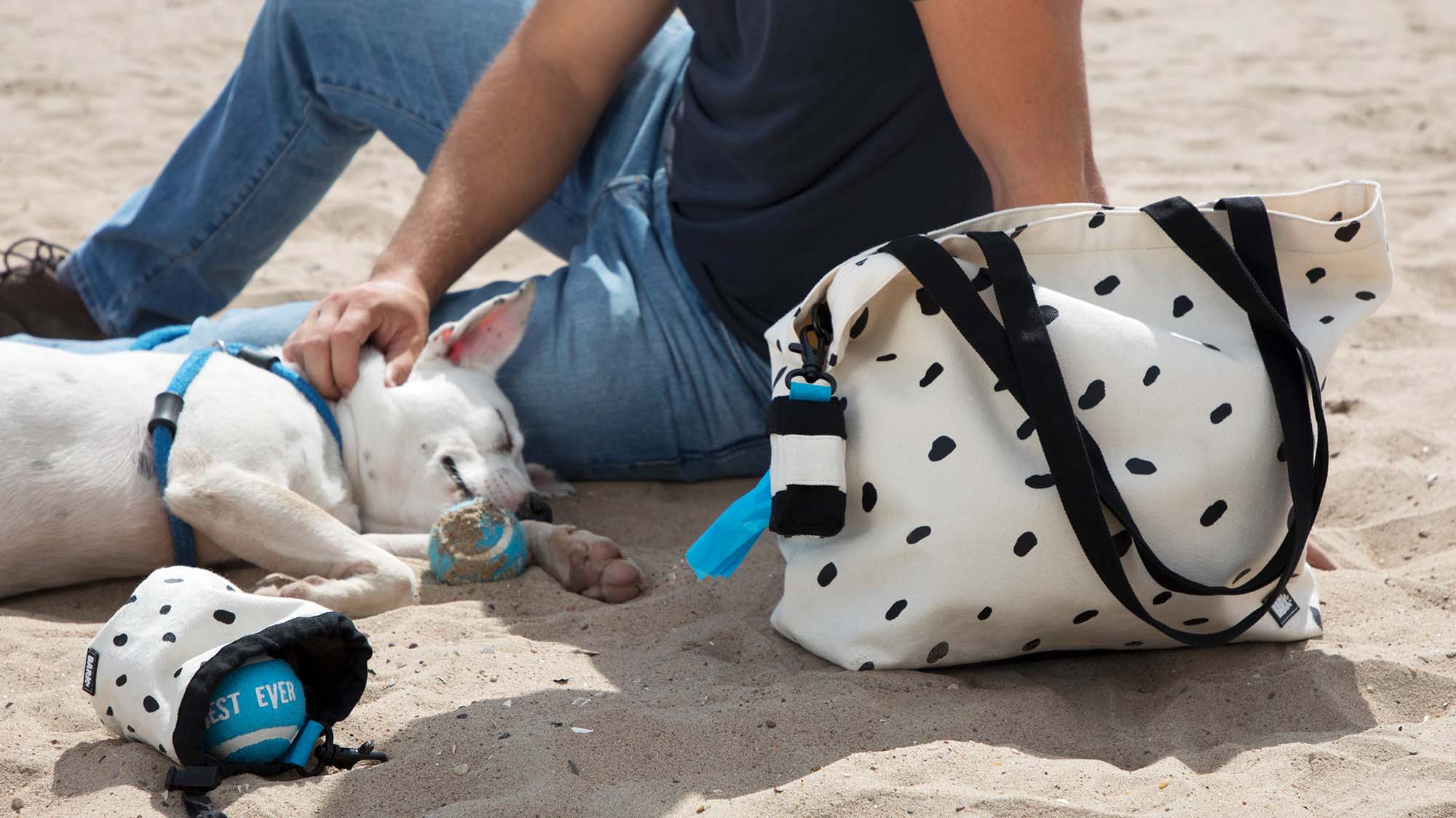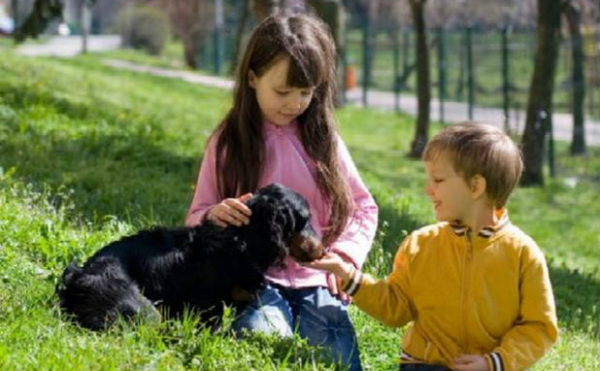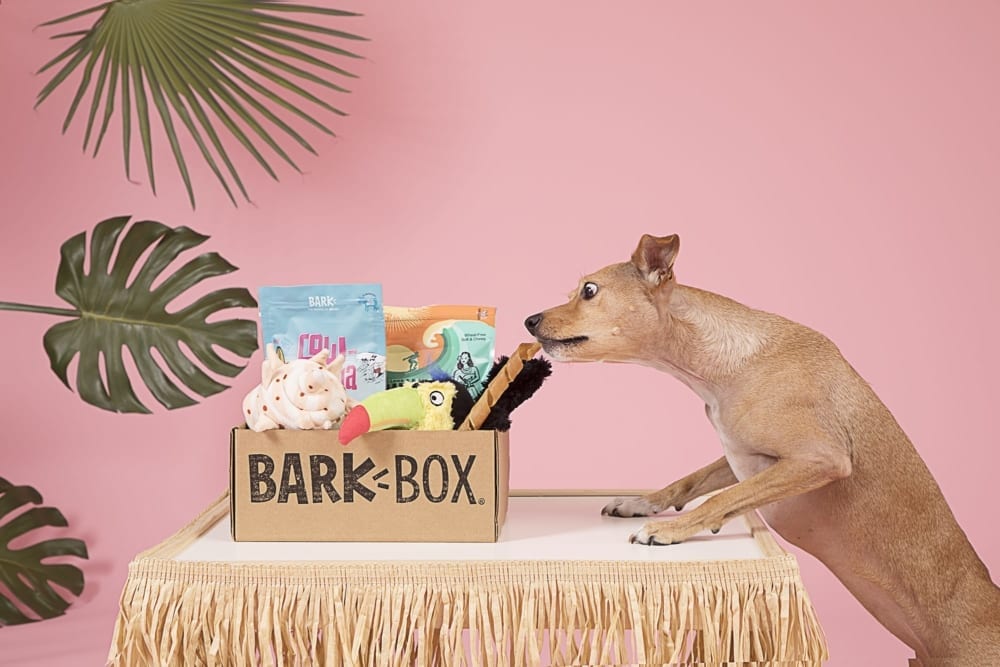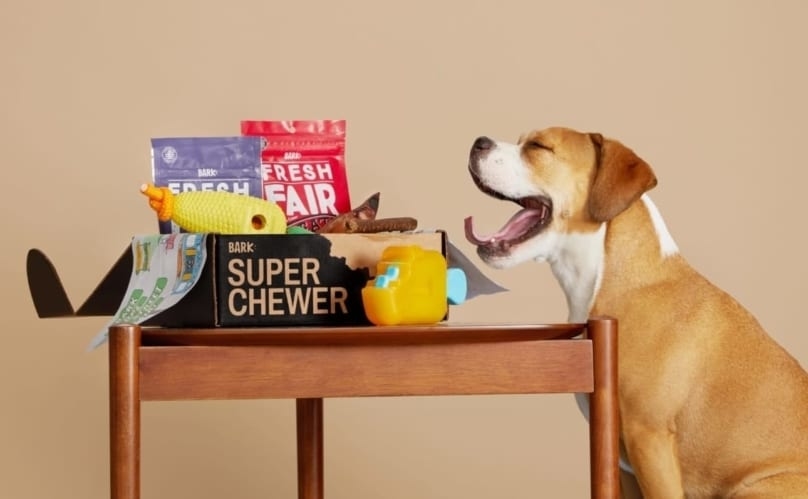How do I introduce my dog to kids?
Short answer: In a supervised, positive manner, making sure everyone is calm.
Long answer: This is a great question and not as black and white as you might think! If your happy family of humans is thinking about adding a 4-legged beast — or if your happy family of adults and 4-legged beasts is thinking about adding a squishy newborn that’s slightly less evolved than a puppy (which can at least be housebroken), then you probably have some questions. Like, “Can I housebreak my infant?” Jk, jk.
We rounded up some common questions families have about dogs and posed them to Travis Brorsen. He’s the guy who trained the winner of CBS’s Greatest American Dog and now uses dogs to teach life skills to elementary school kids. He knows how to get dogs comfortable with kids, and kids comfortable with dogs; he also knows what to do when your dog inevitably realizes he’s gotten screwed with the whole kid thing.
If a couple with a dog is expecting their first child, what should they be doing with the dog to prepare for the arrival of the kid?
First, have certain areas of the house where the dog isn’t allowed. If the dog gets excited and the baby’s crying, there’s no reason for them to be in the same room together, so set a boundary — like in the nursery — where the dog knows he isn’t allowed. If your apartment is too small for that, give the dog a safe place like a crate or a pantry where he can go and it doesn’t feel like a punishment.
Leading up to the baby coming home, make sure the dog has a consistent routine, by which I mean 2-to-3 walks per day for at least 30 minutes each. That gets the dog in a balanced state of mind; what a lot of people don’t understand is that bad behavior comes from the dog having too much energy and not getting enough exercise. A well-balanced dog is calm and focused. Over-excited dogs jump and nip and bite.
Another tip: A lot of people when they get home and their dog is excited, they respond with their own excitement. When you do that, it sends the dog’s energy level through the roof. So, it’s important that you don’t pay attention to your dog for the first 5 or 10 minutes after you come home. Only engage with the dog when the dog’s calm and you encourage calm behavior.
Also consider muzzle training! Done correctly, it’s a positive experience for the dog. If you muzzle train your dog, you can always pop a muzzle on ’em and not have to worry as much about introductions!
What about the actual “Walking Through The Door With The Baby” moment — is there a specific way to prepare for that?
Have your dog walked for an hour to an a half before you come home from the hospital. Your dog will be tired, and you can lay the baby down next to him and they’ll just coexist. It also creates a calmer atmosphere, and your dog will be less excitable about new person! New things! Human home!
Are there specific things owners of much older dogs need to do when introducing a baby?
As long as they’ve been trained, older dogs tend to respond a lot easier to their owner’s commands. If the owner says “Leave it” or claims the space around the baby, older dogs are often a lot more respectful of that. At any age, you have to be careful of the dog claiming the baby as theirs and getting possessive of the child.
As owners, we often think it’s cute when the dog protects the baby but, at the end of the day, if you have friends over you don’t need the dog to protect the baby from your friends. It’s cute, but it’s important that the dog knows you’re the leader of the household and you’re in charge.
Are there specific things you can teach kids to help it go smoothly?
YES. It’s as important to teach children proper behavior towards dogs as it is to make sure dogs know what to do. ALWAYS supervise a dog with any children–never leave them alone.
Teach children to always ask a dog owner if they can pet their dog, and not run up or scream around them. Teaching kids not to pull dogs tails, make sudden, unexpected movements, or high-pitched, loud noises is important. Dogs aren’t plug-and-play machines. Every dog has its threshold, so make sure kids know to respect them and not push boundaries (either accidentally or on purpose). Your pup can’t talk, so make sure to speak up if you see they’re uncomfortable and before the situation can escalate.
Want to reward your pup and give them and kids a fun experience? Spoil them with a BarkBox! Every month BarkBox delivers 2 original toys, designed in-house, 2 full bags of all-natural treats, and a chew. Our treats are made in the USA and Canada, and our recipes never contain any wheat, soy, or corn. Because we want #BarkBoxDay to be incredible for pups AND their parents, every box is wrapped in a fun surprise theme that changes monthly. Sign up here and receive a free extra toy every month. <– This deal is worth up to $108 in value if you sign up for a 12-month subscription! :slightly_smiling_face:

